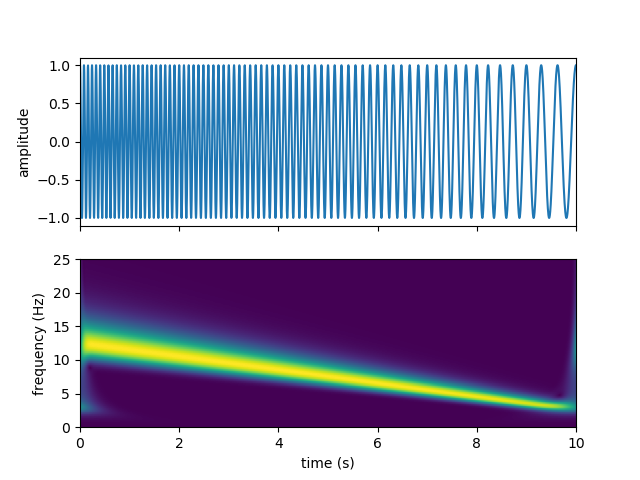Time-frequency analysis through Stockwell transform.
Make sure that you have FFTW installed. For example:
# macOS
brew install fftw
# debian or ubuntu
sudo apt-get install libfftw3-devThen install this python package using pip:
pip install .Or, alternatively, in "editable" mode:
pip install -e .From the command line:
stockwell file.sacIt will produce file.sac.pdf with the time-frequency representation of the signal.
Example usage from python:
import numpy as np
from scipy.signal import chirp
import matplotlib.pyplot as plt
from stockwell import st
t = np.linspace(0, 10, 5001)
w = chirp(t, f0=12.5, f1=2.5, t1=10, method='linear')
fmin = 0
fmax = 250
stock = st.st(w, fmin, fmax)
dt = t[1] - t[0]
fmin = fmin/(len(w)*dt)
fmax = fmax/(len(w)*dt)
extent = (t[0], t[-1], fmin, fmax)
fig, ax = plt.subplots(2, 1, sharex=True)
ax[0].plot(t, w)
ax[0].set(ylabel='amplitude')
ax[1].imshow(np.abs(stock), origin='lower', extent=extent)
ax[1].axis('tight')
ax[1].set(xlabel='time (s)', ylabel='frequency (Hz)')
plt.show()You should get the following output:

Stockwell, R.G., Mansinha, L. & Lowe, R.P., 1996. Localization of the complex spectrum: the S transform, IEEE Trans. Signal Process., 44(4), 998–1001, doi:10.1109/78.492555